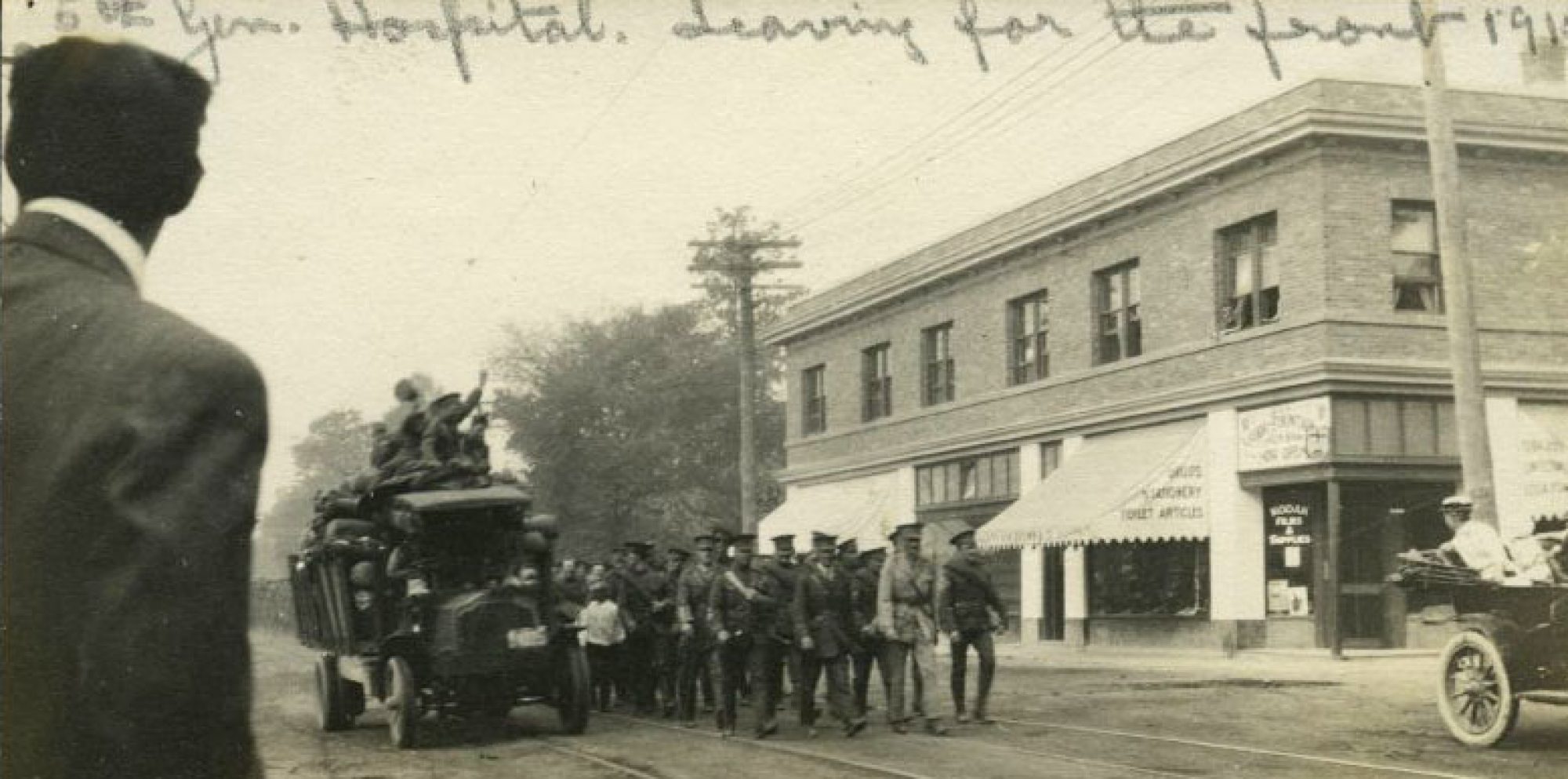
In Esquimalt, both shipbuilding and repair were major industries since 1893, and the industries continued this role as a major employer throughout the First World War. 20
Military historian Chris Madsen tells us that “Despite its significance, the full scope of BC shipbuilding during the First World War was obscure.” In all, BC shipyards built 27 wooden ships and 12 steel cargo steamers in a relatively short time – from early 1917 until to late 1918. 21
The wooden ships were mainly produced in Victoria shipyards and this was due to the appointment of Peter Butchart, whose wife Jennie created the famous gardens, to Director of Wooden Shipbuilding for the Imperial Munitions Board. Jennie Butchart’s celebrated christening of the War Yukon on January 24, 1918 is detailed in the Daily Colonist at left. 22
The Imperial Munitions Board had initially been set up to handle contracts from the UK for shell production, then in early 1917 turned to handling wartime contracts for shipbuilding. The chairman Joseph Flavelle was successful in obtaining these contracts from the British, who by this time needed to replace merchant ships that had been lost to German submarine attacks, and who at home, were preoccupied with producing battleships. 23
Although it would have been less expensive to build in established shipyards in eastern Canada, influential British Columbians such as Butchart lobbied for war business to help the province out of an economic slump based on the argument that BC was recruiting a higher number of troops relative to other provinces. 24
Butchart, who in 1917 was in semi-retirement, was considered to be “one of the few and probably the only one who would have had the leisure to give his whole time to the work.”25 He awarded contracts to Cameron Genoa Mills and Shipbuilders, that was located in the former Esquimalt District and the Foundation Company. Yarrows Ltd. in Esquimalt, although equipped to handle the work was overlooked and the contracts it received during the war were from customers that had dealt with their Scottish yard. In all, five 2,500 ton and twenty larger 3,000 ton wooden steamers were built for wartime use. 26
Once the submarine threat eased off around Britain’s waters, and British shipyards were able to increase production, demand to build in Canadian shipyards eased off. “In Victoria, labour groups and politicians sought further ship orders to alleviate unemployment.”27
British Columbia did at least prove that it could meet the demand, and was fortunate to have received the contracts. It wasn’t until World War II that shipbuilding achieved prominence in the Victoria area once again.
by Catherine Gilbert
